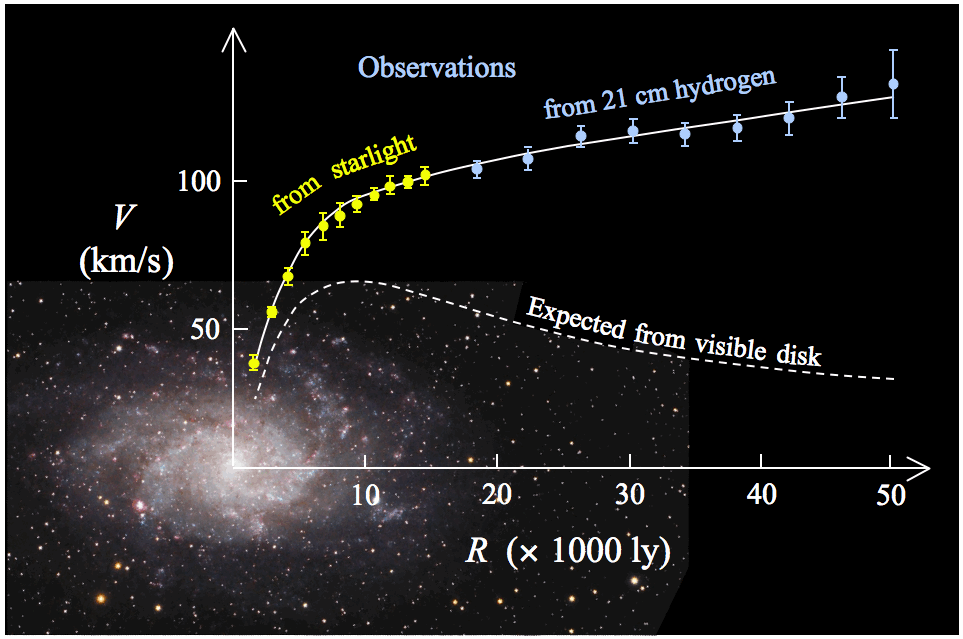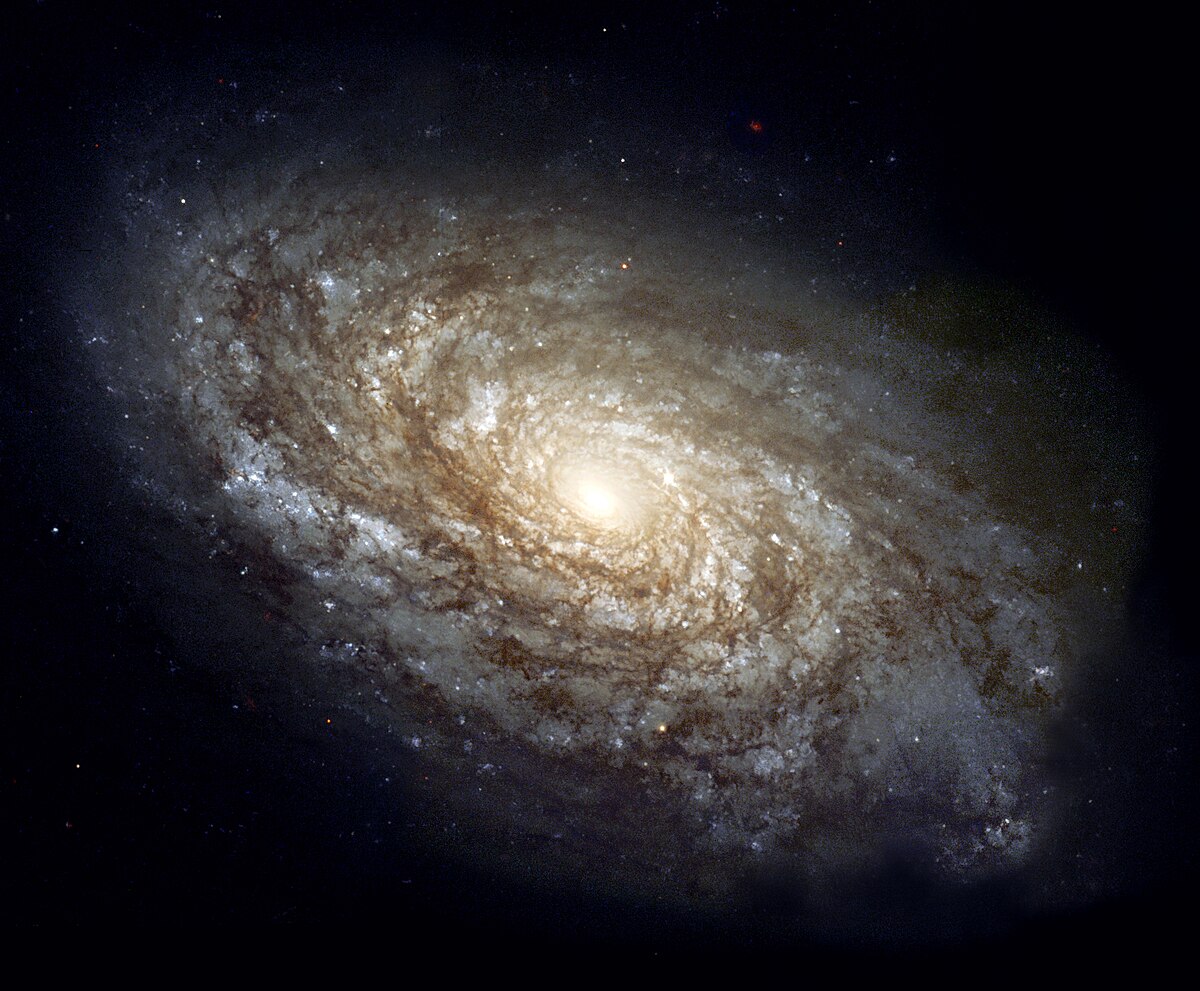Galaxies are large rotating clouds of stars that behave more like storm systems on Earth than solar systems. This has led people like Donald Scott to conclude that galaxies are primarily driven by Birkeland currents and that gravity only plays a secondary role in their behavior. Others have concluded that the anomalous behavior of galaxies are due to dark matter, and others still have concluded that Newton's formula is incorrect when it comes to very large distances.
The problem that these various theories seek to solve is the fact that stars peripheral to a galaxy's center move at speeds in excess of what Newton's formula would predict.
My favorite explanation is Donald Scott's storm analogy. Galaxies are driven externally by large spiraling currents of dark mode plasma that cut through the entire system. However, this doesn't mean that there's no invisible matter. Nor does it mean that Newton's formula is safe from scrutiny.
Nature is a complex place where multiple factors play a role, and galaxies are so large and complex that it would be strange if they can be explained entirely in electrical terms, with no regard to gravity. There's almost certainly a lot of invisible matter mixed up in galaxies, and Newton's formula is in my opinion due for a modification. Charge and capacitance should be incorporated into it since that would help explain gravity anomalies, increases in Earth's gravity over time, and the fact that asteroids are deficient in gravity relative to their size.
A change to Newton's formula would also help explain why galaxies spiral the way they do, because it appears that gravity is something that has a universal tendency to increase in strength over time. It's not only Earth that has seen gravity increase since the time of the dinosaurs. Planets and stars everywhere seem to follow this evolutionary path.
Halton Arp noted in his work on galaxies that they seem to grow larger and more gravitationally strong over time. They start out with a relatively small number of stars that drift outwards from the center where new stars are continuously being created. Hence, the oldest stars and planets are found out towards the periphery with the younger ones closer to the center. If gravity is something that grows stronger over time, it follows that the stars at the distance are more gravitationally strong than the ones closer to the center, and that there's a need to incorporate this into Newton's formula when we deal with galaxies.
The idea that gravity grows stronger over time is so controversial that it's never mentioned as a possibility by mainstream physicists. However, the observational data are undeniable, and a formula called modified Newtonian dynamics has therefore been developed to address this without specifically mentioning Halton Arp or the tendency of gravity to become stronger over time. A new variable has been introduced into Newton's formula without any further explanation than that it's required in order to make observations fit the theory. But closer scrutiny reveals that what this variable actually does is to make gravity a function of distance from the center of galaxies, exactly as Halton Arp would have suggested.
The modified Newtonian dynamics formula works well enough to explain the rotational speed of a large number of galaxies without the need to introduce other factors, and we can see why this is so once we fully understand the problem at hand.
Consider the measured velocities of the following spiral galaxy:
 |
| Spiral velocity relative to distance from center of galaxy |
The measurements make a smooth curve upwards instead of the smooth tapered curve expected from Newton's formula. Hence, all that's needed in order to account for the discrepancy is to add a factor that grows smoothly with distance, and that's precisely what modified Newtonian dynamics does. However, to understand what this added factor represents we have to consider the significance of the measured data.
Stars at a large distance from a galaxy's center move much faster than expected. The centripetal forces at play are such that the stars should escape into space. But they don't. Stars at the peripheral drift away from the center of galaxies at moderate speeds, indicating that some force is keeping them in place.
The formula for centripetal force is F = mv^2/r. It's a force that grows exponentially with velocity, so the discrepancy in speeds from what was expected is a significant problem. The factor added to Newton's formula by modified Newtonian dynamics may look like a small fudge, but it is in fact a big deal, and it must be given a proper name. We can't have gravity becoming stronger with distance from the center of galaxies without some plausible explanation for why this is so.
My position is that gravity is not merely a function of mass. Charge plays an important role in it as well. I've come to this conclusion because surface gravity on Earth appears to have increased by a great deal since the time of the dinosaurs, and there hasn't been enough matter added to our planet during this time to account for this change. However, our planet has also expanded during this time, and that has given our planet a greatly increased capacitance. Our planet is therefore a lot more charged now than it was back in the days of the dinosaurs.
The mystery of the increased gravity can be solved by including charge together with mass as a factor determining gravity. This does not only solve the problem of why dinosaurs were as large as they were back in their time. It explains why asteroids have very little gravity as well, and it provides an explanation for the mystery factor used in modified Newtonian dynamics. All these problems can be solved by incorporating charge into Newton's formula for gravity.
Putting all this together, we get a comprehensive explanation for galaxies. Enormous forces at the center of galaxies condense space into matter. Young stars are born with low mass and low capacitance. These drift out and away from the center. Growing older, they pick up more mass through mass condensation. Their capacitance also increase. They carry more charge over time, and this becomes the main driver for increases in gravity.
This is not to say that modified Newtonian dynamics is the one and only explanation for the observed behavior of galaxies. Dark matter in the form of dust and debris is also a factor, and the electric filament model proposed by Donald Scott remains a favorite of mine. However, modified Newtonian dynamics does make a solid case, especially if we allow for charge as a factor in Newton's formula for gravity.
 |
| Spiral galaxy |
By The Hubble Heritage Team (AURA/STScI/NASA) NASA Headquarters - Greatest Images of NASA (NASA-HQ-GRIN) - http://nix.larc.nasa.gov/info;jsessionid=1sl2so6lc9mab?id=GPN-2000-000933&orgid=12 http://imgsrc.hubblesite.org/hu/db/images/hs-1999-25-a-full_tif.tif, Public Domain, Link
No comments:
Post a Comment